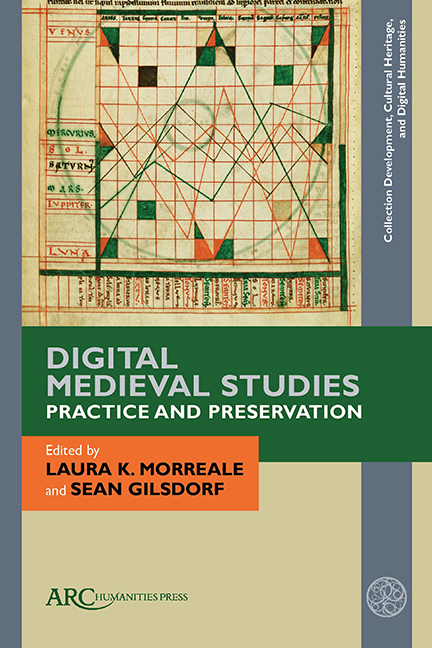Book contents
- Frontmatter
- Contents
- List of Illustrations
- Introduction: The Medievalist, Digital Edition
- Chapter 1 Beginnings: The Labyrinth Medieval Studies Website
- Chapter 2 New Approaches to Old Questions: Digital Technology, Sigillography, and digisig
- Chapter 3 Corpus Synodalium: Medieval Canon Law in a Digital Age
- Chapter 4 Teaching Constantinople as a (Pixelated) Palimpsest
- Chapter 5 Life on—and off—the Continuum
- Appendix: Permanent Links to the Catalogued Assets of Profiled Projects
- Index
Chapter 5 - Life on—and off—the Continuum
Published online by Cambridge University Press: 07 October 2022
- Frontmatter
- Contents
- List of Illustrations
- Introduction: The Medievalist, Digital Edition
- Chapter 1 Beginnings: The Labyrinth Medieval Studies Website
- Chapter 2 New Approaches to Old Questions: Digital Technology, Sigillography, and digisig
- Chapter 3 Corpus Synodalium: Medieval Canon Law in a Digital Age
- Chapter 4 Teaching Constantinople as a (Pixelated) Palimpsest
- Chapter 5 Life on—and off—the Continuum
- Appendix: Permanent Links to the Catalogued Assets of Profiled Projects
- Index
Summary
WHEN COMPUTER SCIENTISTS need an antonym for “digital,” they tend to avoid using the dated term “analog(ue).” Instead, they contrast discrete phenomena with a continuum, “digitally” with “continuously.” Anything digital is, at its most basic essence, a series of 1s and 0s, indivisible, with no fractional in-between. The “real world” operates on a smooth continuum, made up of building blocks that are essentially infinitely divisible. The real-world problems we want to solve exist along that continuum. Medieval manuscripts, for example, are made up of animal skin, oak gall ink, mineral and botanical pigments, all of which are, in their physical properties, infinitely complex, infinitely divisible. Digitization and data management convert our research questions into 1s and 0s, manageable and navigable pieces of binary code. That simplification sets fixed points along the continuum, transforming it into something cardinal, countable, and calculable. But the computer can't enter its own data or interpret its own results. That's where the humans, and the humanists, come in.
It is said that Medieval Studies invented the Digital Humanities in the 1950s in the form of the Index Thomisticus, developed with IBM by Father Roberto Busa and a team of female punch-card operators. Seventy years later, medievalists such as those who contributed to this volume continue to apply resourcefulness, creativity, and sheer willpower to the development and use of digital methodologies. We brainstorm, we collaborate, we innovate, we meet obstacles, and we work to overcome them. The essays in this volume all have interrogated stages of digital medieval resources, from the once-groundbreaking-but-now-obsolete to the redesigned to the shiny and new. All of these projects share a common formula: an investigator applies an algorithm to a dataset in an interface. The contributors have considered how digital resources and tools can, or did, or might, facilitate their work. These labyrinthine digital journeys are full of dead ends and backtracking, shortcuts and long delays. The lessons learned along the way are always valuable, whatever the research results, and each failed experiment leads to refinements of methodology. Thirty years ago, data was trapped in its interface. Today, best practices demand that data be easily extractable from the interface. We once expected our digital tools to be built to last forever. Now, it is now an accepted maxim that the framework of any given digital resource is destined for eventual obsolescence. It is the data within that must be preserved.
- Type
- Chapter
- Information
- Digital Medieval Studies - Practice and Preservation , pp. 99 - 111Publisher: Amsterdam University PressPrint publication year: 2022



